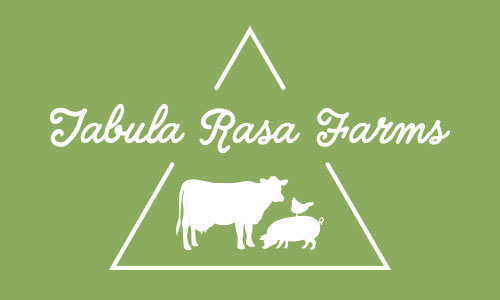
Giving back more than we take
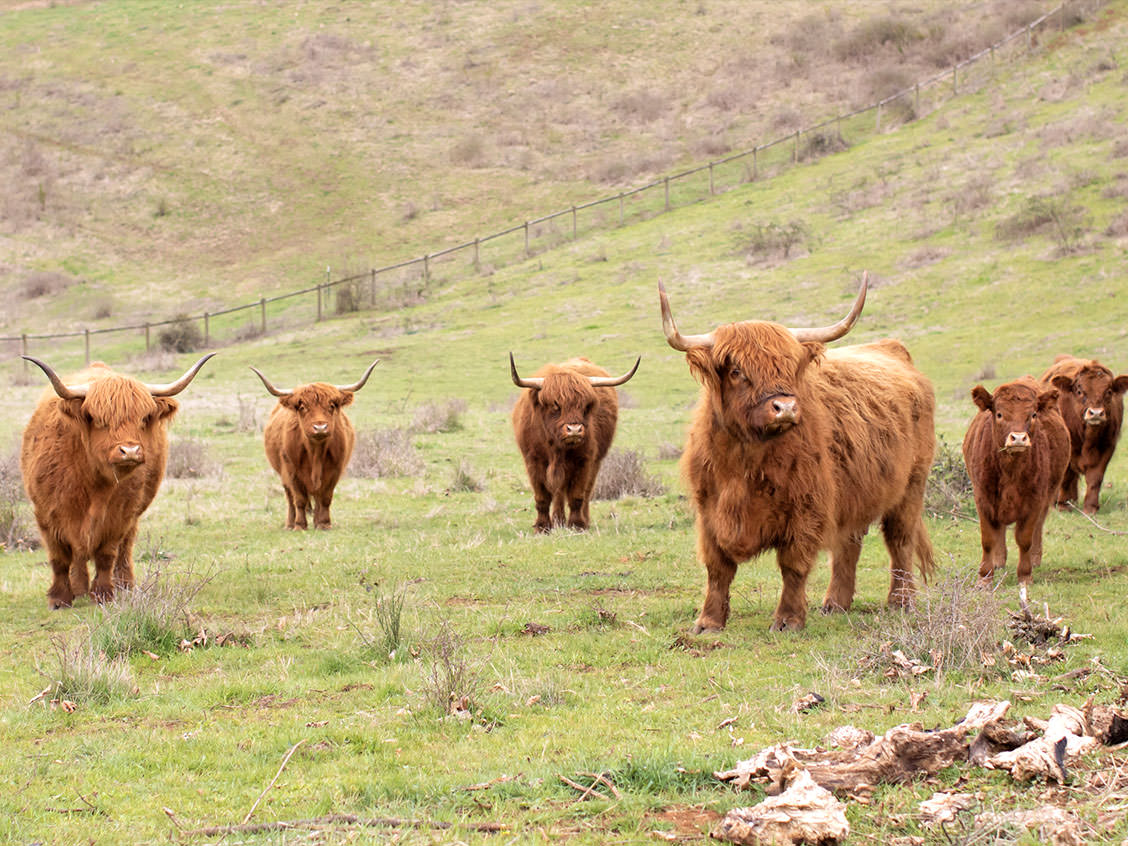
Spring is so empowering, that sense of renewal makes everything seem possible. Wildflowers exploding in the fields, trees waking up with the colorful blossoms that will give way to summer shade and our beautiful pastures beginning the growth cycle that will nourish our animals throughout summer and beyond.
Somehow this spring has felt more welcome than in years past. Perhaps a sign that we are edging closer to a post-pandemic world filled with hope and community.
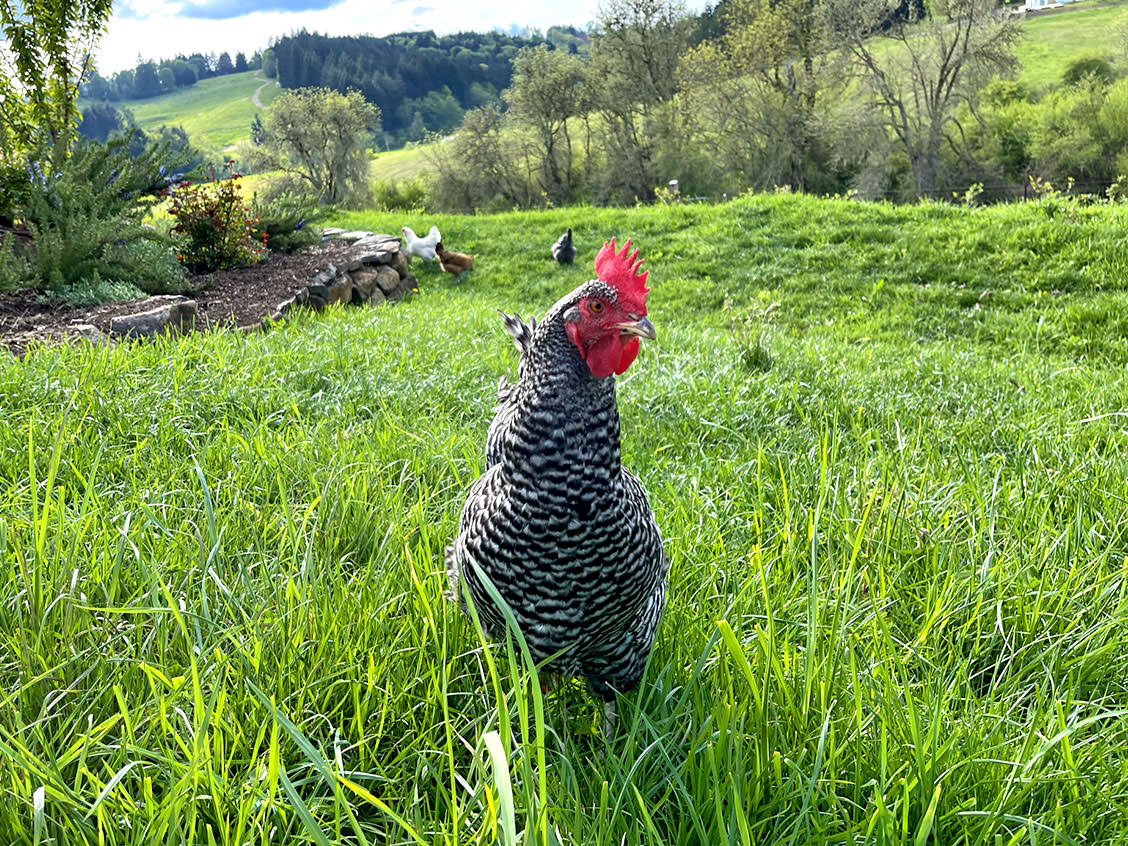
Our unusually warm April weather has kick-started the growth of our pastures. It has also been a warning that erratic weather patterns are a growing reality of climate change. We have to figure out ways to be flexible and adapt as nature adapts, recognizing that now within every season the potential for rapid changes in weather exists.
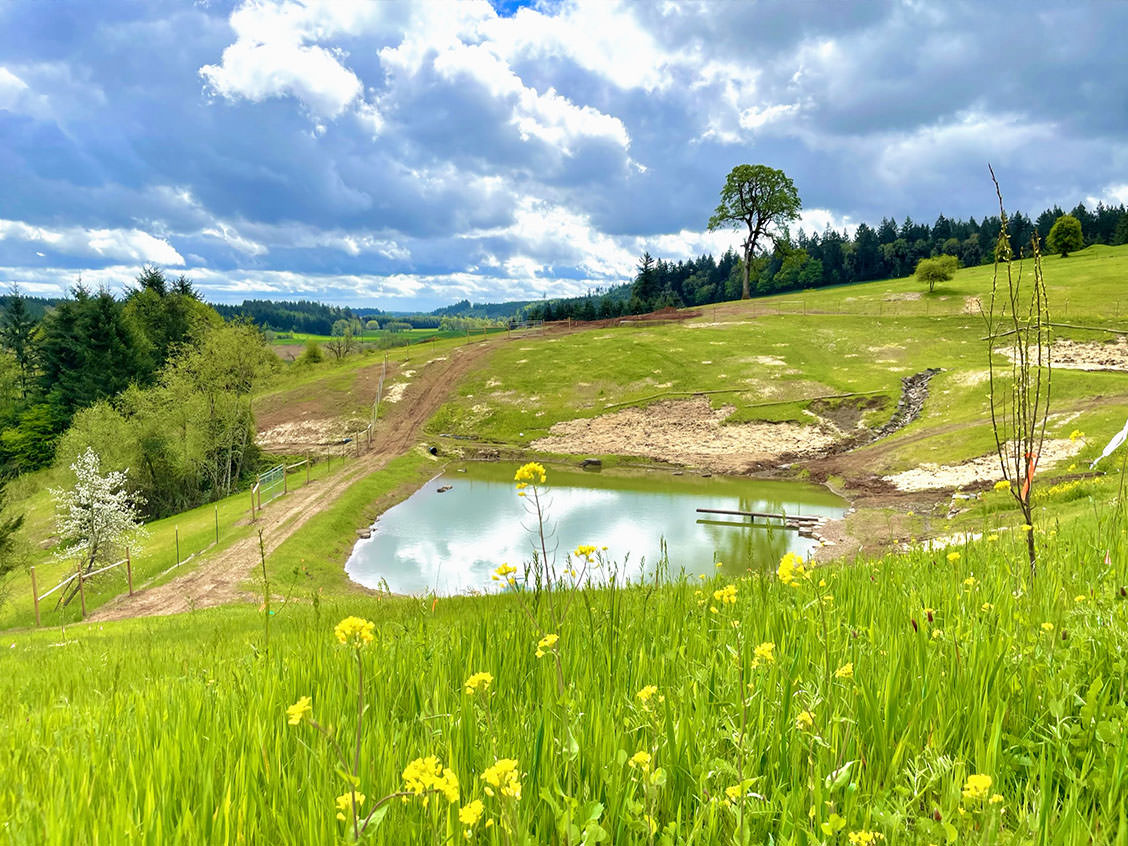
As a regenerative agriculture farm, we have some key tools to help us with that. Permaculture water retention landscaping is an incredibly important one. The systems we have developed to feed the earth’s water table have helped us extend our grazing season, control erosion and provide some drought resilience.
There is a natural bell curve to the growth of grass. It starts slow, speeds up and slows down again. Here in Western Oregon, the growth cycle for our best grass starts in April and ends by mid-July. The middle area of the curve is where the grass accrues the most biomass and sequesters the most carbon. If it is grazed too aggressively early in the cycle, the curve is interrupted and it won’t speed up. That results in overgrazing which can contribute to drought.
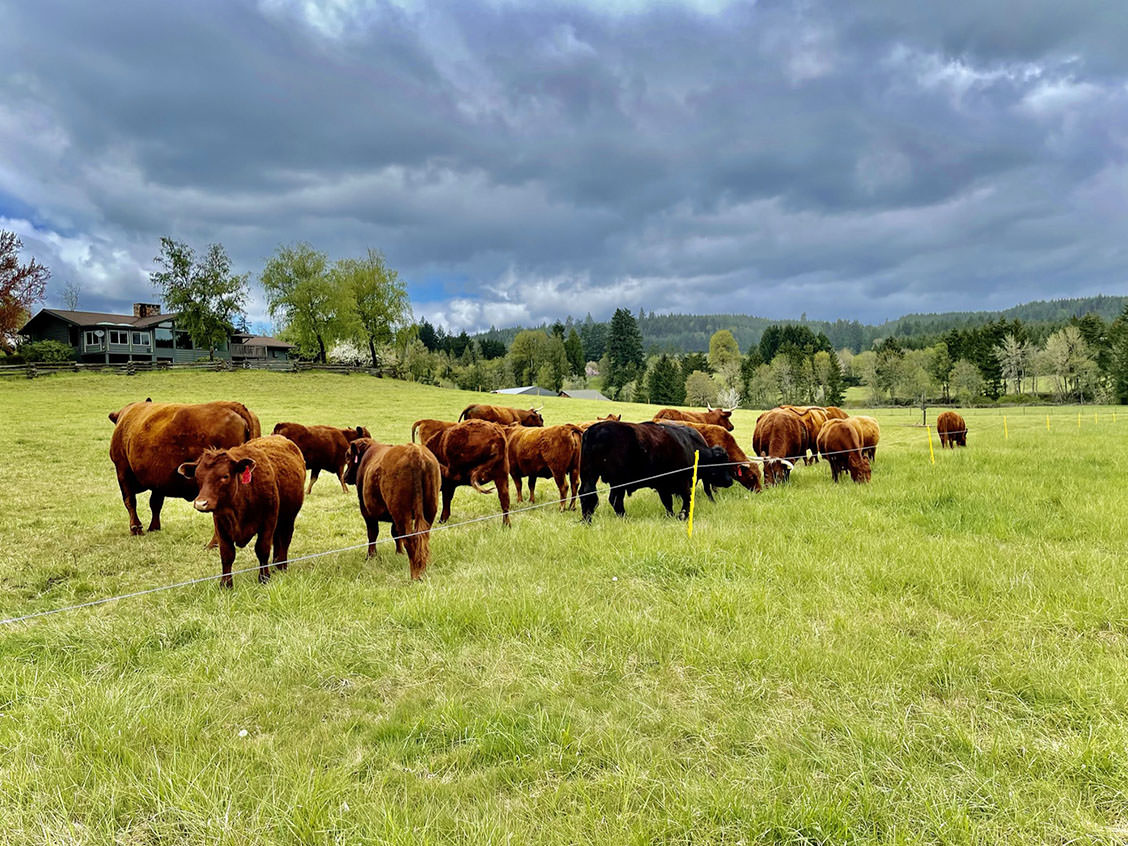
We believe there is a misguided perception out there that cattle are very environmentally destructive. Pundits tell us we all need to eat less beef to control climate change. Not true. People eating meat is not the problem. The problem is how factory farms, disconnected from nature and driven only by profit, are raising cattle. Their methodology is the destructive force. A growing body of scientific evidence shows small and mid-sized pastured farms are offering a solution.
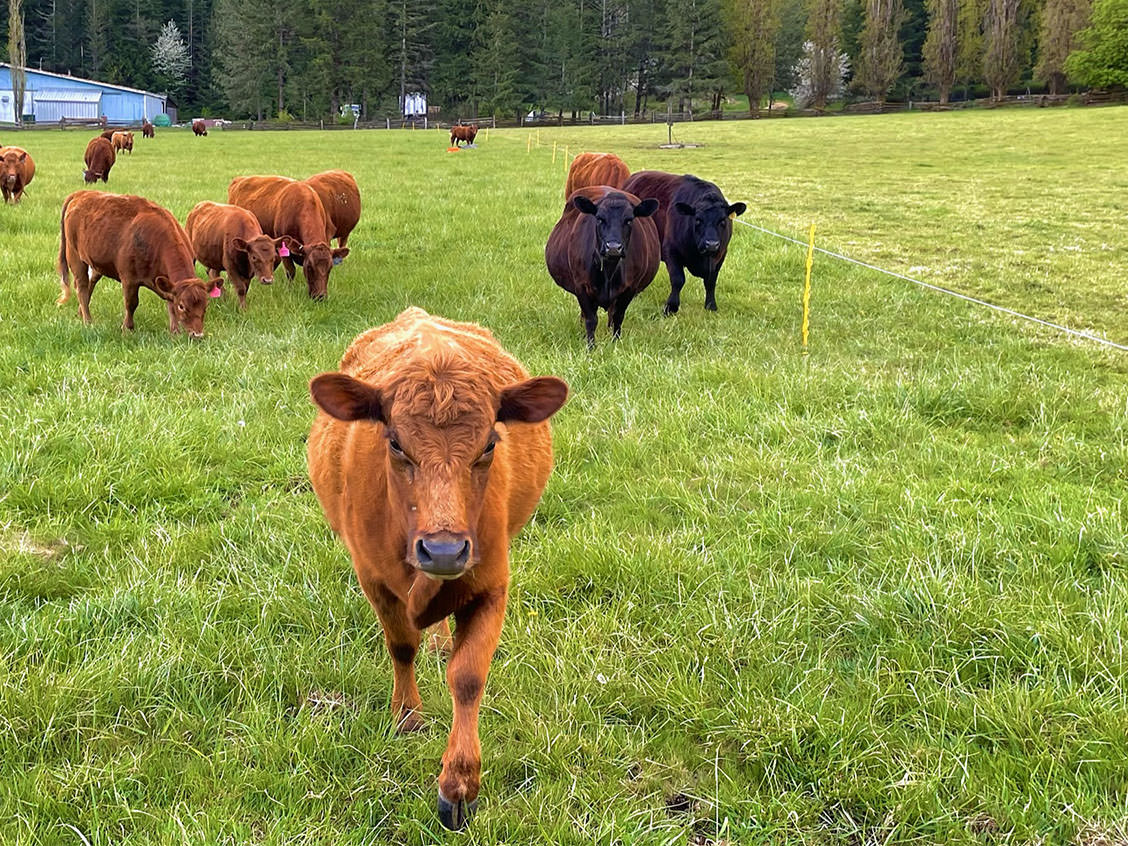
Regenerative grazing practices working in harmony with nature are restorative. Science confirms they not only sequester more greenhouse gases than they emit, they also build up soil faster than many other agricultural systems. When you consider 68% or the world’s agricultural lands are used for grazing, enormous amounts of carbon can be sequestered and put into the ground if the right practices are put in place. Degraded pastures can be restored and biodiversity increased.
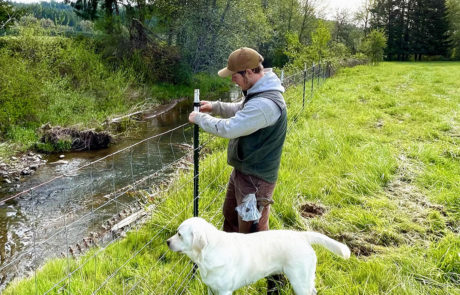
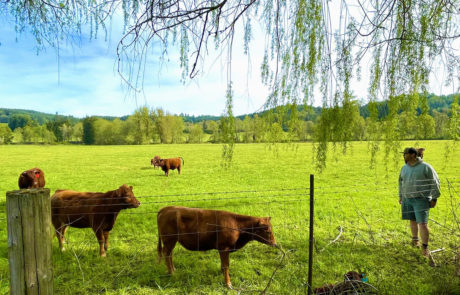
At Tabula Rasa Farms we practice managed rotational grazing, one of the cornerstones of regenerative practices. We focus on growing the best possible pastures and use our livestock to help us achieve that goal. Spring is the time we reassess our pastures and adapt our grazing plans to current weather patterns and farm conditions.
Cows need good fencing, a good water source and shade. We structure pasture plans to time out the movement of the cattle from one area or paddock to the next to ensure they have those three things and never overgraze a pasture. For example, we will graze our pastures with less shade in early spring when temperatures are lower. It’s a continual motion moving the herd to the next paddock when the grass has been grazed to about six to eight inches. This enhances carbon capture and keeps the grass long enough for the roots to meet the water table which in turn strengthens the pasture’s resilience.
It’s all about reading your land and adapting to its unique rhythms. It’s about helping your animals live their best possible life. And above all else, it’s about giving back to the earth more than you take.
If you would like to learn more about regenerative farming practices, you can schedule a farm tour here. We’d love to see you.
Join our waitlists

Giving back more than we take

Spring is so empowering, that sense of renewal makes everything seem possible. Wildflowers exploding in the fields, trees waking up with the colorful blossoms that will give way to summer shade and our beautiful pastures beginning the growth cycle that will nourish our animals throughout summer and beyond.
Somehow this spring has felt more welcome than in years past. Perhaps a sign that we are edging closer to a post-pandemic world filled with hope and community.

Our unusually warm April weather has kick-started the growth of our pastures. It has also been a warning that erratic weather patterns are a growing reality of climate change. We have to figure out ways to be flexible and adapt as nature adapts, recognizing that now within every season the potential for rapid changes in weather exists.

As a regenerative agriculture farm, we have some key tools to help us with that. Permaculture water retention landscaping is an incredibly important one. The systems we have developed to feed the earth’s water table have helped us extend our grazing season, control erosion and provide some drought resilience.
There is a natural bell curve to the growth of grass. It starts slow, speeds up and slows down again. Here in Western Oregon, the growth cycle for our best grass starts in April and ends by mid-July. The middle area of the curve is where the grass accrues the most biomass and sequesters the most carbon. If it is grazed too aggressively early in the cycle, the curve is interrupted and it won’t speed up. That results in overgrazing which can contribute to drought.

We believe there is a misguided perception out there that cattle are very environmentally destructive. Pundits tell us we all need to eat less beef to control climate change. Not true. People eating meat is not the problem. The problem is how factory farms, disconnected from nature and driven only by profit, are raising cattle. Their methodology is the destructive force. A growing body of scientific evidence shows small and mid-sized pastured farms are offering a solution.

Regenerative grazing practices working in harmony with nature are restorative. Science confirms they not only sequester more greenhouse gases than they emit, they also build up soil faster than many other agricultural systems. When you consider 68% or the world’s agricultural lands are used for grazing, enormous amounts of carbon can be sequestered and put into the ground if the right practices are put in place. Degraded pastures can be restored and biodiversity increased.


At Tabula Rasa Farms we practice managed rotational grazing, one of the cornerstones of regenerative practices. We focus on growing the best possible pastures and use our livestock to help us achieve that goal. Spring is the time we reassess our pastures and adapt our grazing plans to current weather patterns and farm conditions.
Cows need good fencing, a good water source and shade. We structure pasture plans to time out the movement of the cattle from one area or paddock to the next to ensure they have those three things and never overgraze a pasture. For example, we will graze our pastures with less shade in early spring when temperatures are lower. It’s a continual motion moving the herd to the next paddock when the grass has been grazed to about six to eight inches. This enhances carbon capture and keeps the grass long enough for the roots to meet the water table which in turn strengthens the pasture’s resilience.
It’s all about reading your land and adapting to its unique rhythms. It’s about helping your animals live their best possible life. And above all else, it’s about giving back to the earth more than you take.
